Advice and information on Legionella safety within the home.
Asbestos in the Home
Advice on Asbestos containing products within the home.
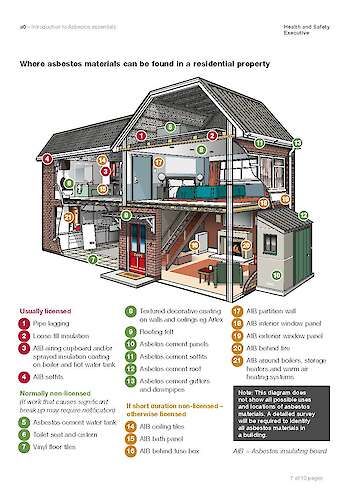 Asbestos has been used in the construction and modernisation of housing for many years mainly between the 1950’s to the mid 1980’s. However asbestos may be present if a building was constructed or refurbished before the year 2000. The Association has a number of properties that were built before the year 2000 and therefore may contain some asbestos products.
Asbestos has been used in the construction and modernisation of housing for many years mainly between the 1950’s to the mid 1980’s. However asbestos may be present if a building was constructed or refurbished before the year 2000. The Association has a number of properties that were built before the year 2000 and therefore may contain some asbestos products.
Many people worry about the health and safety risks associated with asbestos and therefore the Association has produced a factsheet to address any concerns and questions about asbestos in the home.
What is asbestos?
Asbestos is a naturally occurring mineral found in rocks all over the world. It is made up of lots of small fibres which are strong and resistant to heat and chemicals – which is why it was used in a wide range of building materials. There are three main types of asbestos: Crocidolite (Blue Asbestos) Amosite (brown asbestos) and Chrysotile (white asbestos).
Asbestos containing materials: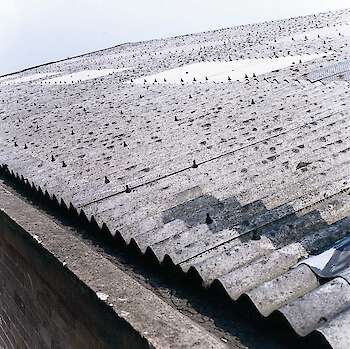
Asbestos Cement is mainly a mixture of chrysotile and cement, moulded and compressed to produce a range of asbestos products such as profiled roofing sheets and slates, flat sheets, gutters, drainpipes and water tanks. The asbestos fibres are mostly firmly bound into the cement matrix and not readily made airborne.
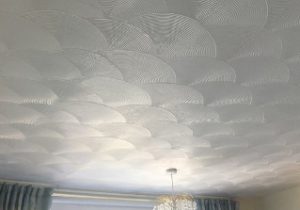 Textured decorative coatings containing asbestos are thin decorative and textured finishes, such as paints and ceiling plasters (Artex), used to produce visual effects. The proportion of asbestos in such coatings is normally between 2–5% chrysotile with fibres well contained within the coating matrix and not readily made airborne.
Textured decorative coatings containing asbestos are thin decorative and textured finishes, such as paints and ceiling plasters (Artex), used to produce visual effects. The proportion of asbestos in such coatings is normally between 2–5% chrysotile with fibres well contained within the coating matrix and not readily made airborne.
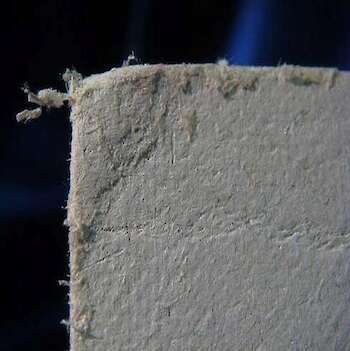 Asbestos insulation board is a lightly compressed board made from asbestos Chrysotile fibre and cement of silicate. Products include fire paneling, support boards and soffit boards. Insulation boards may contain between 37 - 97% asbestos, within their matrix and due to their low density are quite easy to break.
Asbestos insulation board is a lightly compressed board made from asbestos Chrysotile fibre and cement of silicate. Products include fire paneling, support boards and soffit boards. Insulation boards may contain between 37 - 97% asbestos, within their matrix and due to their low density are quite easy to break.
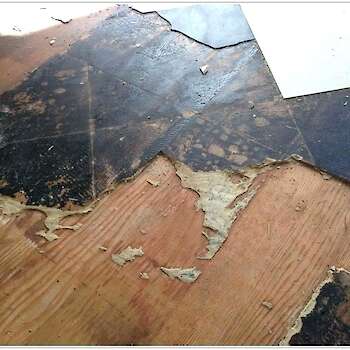 Encapsulated Asbestos materials include floor tiles, toilet cisterns and electrical linings. These are generally considered lower risk due to the fibres being firmly bound into the product matrix and are much less likely to be readily airborne.
Encapsulated Asbestos materials include floor tiles, toilet cisterns and electrical linings. These are generally considered lower risk due to the fibres being firmly bound into the product matrix and are much less likely to be readily airborne.
Why is asbestos a problem?
Materials containing asbestos are ONLY a problem if they are damaged or broken and able to release high levels of fibres into the air which can harm your lungs and lead to serious diseases.
What are the risks?
Due to the fact Asbestos was used in numerous building materials there are low levels of asbestos fibres in the air everywhere. However the Health & Safety Executive consider these levels to be safe and unlikely to cause problems. Asbestos fibres only become dangerous if you breathe in large quantities and if you do not work with asbestos you are highly unlikely to be effected by it, even if there are asbestos products present in your property.
How do I know if there's asbestos in my home?
New products without asbestos look very similar to the materials they replaced – the only way to tell is by testing a sample – this should be done by a trained surveyor. If you're concerned about building materials in your home, you can get further information and advice from the Association, see contact details below.
If you think you have asbestos?
Treat these materials as if they are asbestos and LEAVE THEM ALONE.
- DO NOT saw, sand down, drill, screw into or disturb these materials – as long as they are in good condition they are not harmful.
- DO NOT attempt to remove asbestos containing materials yourself – these can only be safely removed by a trained contractor.
You can however paint textured coatings on ceilings etc. as this helps seal the product and further minimises the risk of fibres being released.
If the material is damaged
If you have material in your home that is damaged, flaking or releasing fibres and you are worried it might be asbestos please call the Association immediately. We will send a Technical Officer to inspect the material and take necessary actions. If we find there is a problem we will arrange for the damage to be repaired or the asbestos to be removed and disposed of safely.
REMEMBER - DO NOT DISTURB
There is no need to panic – asbestos is not a problem unless it is damaged, flaking or releasing fibres. Moving or disturbing asbestos materials could release fibres and dust which could be harmful to you and your family.
Please see the Associations website www.hjaltland.org.uk for further information and if you are concerned you can contact us on 01595 694986 or by e-mail using mail@hjaltland.org.

